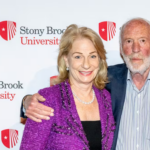News FeatureBy Daffodil Altan, Pacific News Service The shooting deaths of 10 people on a Minnesota Native American Indian reservation by a high school student has national Native media wrestling with how to appropriately cover issues raised by the tragedy.
SAN FRANCISCO – March 23, 2005 -The story sounds familiar. A teenager shoots five of his fellow high school students, his grandfather, his grandfather’s wife, a security guard, a teacher and himself. Newspapers report he wore a long black coat, and may have posted messages on neo-Nazi Web sites. It is said he was teased at school. But the teen, Jeff Weiss, was not white. He hailed from a long line of Chippewa Indians. And the shooting, like others preceding it, did not happen in suburban America. It happened in Indian Country, on a stretch of wooded reservation with a glistening body of water known as Red Lake. Whether this matters — or should matter — in the somber telling of this developing story is something that Native American media outlets, most of which are staffed by members of various national tribes, are considering in a way different from their mainstream counterparts. When residents of the Hoopa Valley Reservation in Northern California looked at Columbine, “most of the opinion was, ‘Well this doesn’t happen here,'” says Joseph Orozco, station manager and radio host for Hoopa Tribal Radio. “But now it’s Red Lake, a reservation, a native student. That one’s a little tougher.” It hits close to home, Orozco says, because of the belief that common tribal cultural standards should have prevented such tragedies from happening on reservations. Some members of Native media are looking to cover the story in a way that will help tribal elders and members of various national tribes examine the demise of their traditional networks. “The social contracts that used to be in place are not as strong or as cohesive as they once were,” says Tim Johnson, executive editor of Indian Country Today, the largest U.S. Native American newspaper, with a circulation of 50,000. “And really, this requires our tribal leaders to respond in real time to these amazing shifts in mainstream society.” Johnson is planning a series of stories that will examine the rise of anti-Indian sentiment across the country, as well as the rise of violence on reservations. When something like this happens, Johnson says, Native tribes immediately consider what he calls “the social-spiritual balance” in someone’s life. “When we see something like this we see that some folks in our community have lost their way, have lost their attachment to their own culture.” “I don’t think (the Red Lake shooting) is indicative of Indians any more than David Koresh” represented white people, says James May, the West Coast correspondent for Indian Country Today, referring to the former leader of the Branch Davidians in Waco, Texas. “Some of it has to do with just poor rural life.” Many media stories have focused on the now-familiar profile of Red Lake — it is remote, poor and isolated — as telltale signs of why the violence may have happened there. Hoopa Radio’s Orozco believes cultural elements in Native culture, beyond a shared oppressive poverty, do play a role. “It goes deeper than just being poor,” he says, “Poverty is a symptom of our whole existence.” Something else is being lost, he says. “The people who have carried on these traditions for a long time are somehow getting squeezed out, and that does damage to the psyche.” He believes teens who are the most traditional and spiritual have the hardest time meshing with mainstream high school culture. But Duane Beyal, editor of the Navajo Times, believes that cultural and spiritual grounding are precisely what may keep teens from self-inflicted or outward violence. “For example, with the Navajo, if you have trouble, we would say you are out of harmony with yourself and the world. A lot of our ceremonies are geared toward restoring the harmony.” Walk across Navajo Nation, he says, and you will see these types of ceremonies happening all the time. “Obviously this youth was troubled and did not have that kind of mechanism in place to help him.” But the lack of traditional cultural support may not be much different from the lack of other support networks — like sports or family — that afflict many mainstream American teenagers, some say. “Here we have clearly an unhinged kid, just like in Colorado,” says Indian Country’s May. Youth violence, after all, has not been confined to Native American Indian reservations. “They’re just things that strike out of the blue,” says Navajo Time’s Beyal. “You can’t see them coming. In that sense it’s not a Native American thing, or a racial thing. It’s a societal thing.” PNS contributor Daffodil Altan (daltan@pacificnews.org) is an editor and reporter for Pacific News Service and New California Media, an association of over 700 ethnic media organizations representing the development of a more inclusive journalism. |
||
|










